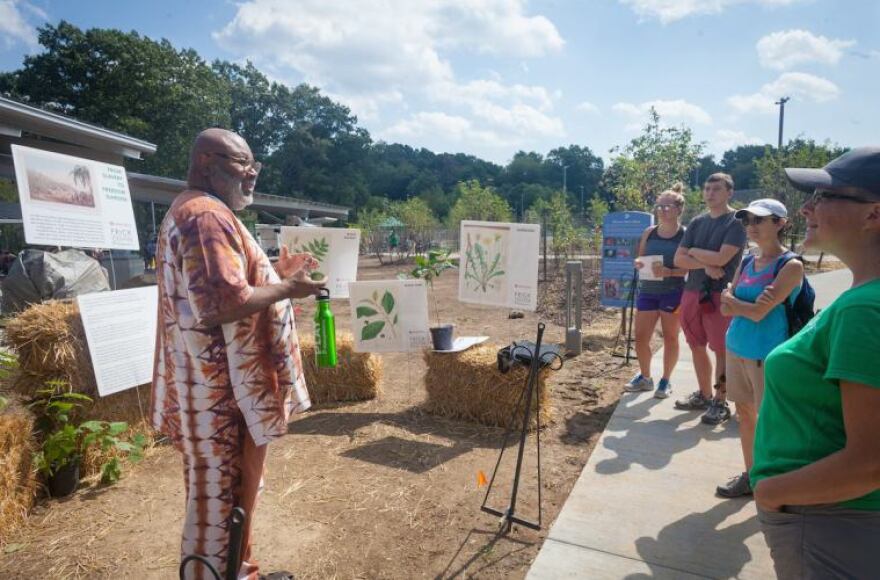An overlooked part of the Underground Railroad’s history is being brought back to life in Pittsburgh’s Frick Park. The From Slavery to Freedom Garden is a collaboration between the Frick Environmental Center and the Senator John Heinz History Center.
Samuel W. Black is the director of African American programs at the History Center, and project director for the From Slavery to Freedom exhibit there. Nineteenth century paintings, African textiles and even shackles used on enslaved African people are some of the objects on display within the museum’s walls. But as Black was putting together the exhibit, he found a hole in the literature.
“There’s very little mention of the experiences of runaway slaves in terms of the impact of natural environment,” Black says.
So he did the research himself. Black looked at slave narratives and other primary sources to gather information about over 50 plant species that played a role in the lives of enslaved people who travelled north looking for their freedom. Some of those are now growing right outside the entrance of the Frick Environmental Center.
Raised beds full of okra, tomatoes, collards and cowpeas are the centerpiece of the garden at the end of its first growing season.
“We chose the plants that really represented agency and sovereignty,” says Camila Rivera-Tinsley, the director of Education and the Frick Environmental Center for the Pittsburgh Parks Conservancy,
Rivera-Tinsley says these crops provided an opportunity for formerly enslaved people to create market gardens to sustain their new lives once they arrived in Pittsburgh, Cleveland or Buffalo.
Other plants were necessary for survival as African Americans made the dangerous journey north — like wild lettuce. It was a coffee substitute, but also a cleanser.
“It was used by runaway slaves. They would make a brew out of it, and drink it,” Samuel Black says. “And especially women, because it would control their menses. You’re looking to be at your optimum health if you’re looking to escape slavery.”
Black says the bark of trees was used by runaway slaves to make soles for shoes, and hardwood was fashioned into tools and also weapons to defend themselves from the people who came after them, with hunting dogs and on horseback.
“A runaway slave had to really be almost ingenious on how to survive in nature in order to survive the escape,” Black says.
Black says the From Slavery to Freedom Garden is a celebration of that resourcefulness and skill, and a testament of the will of enslaved African Americans to be free. He also says it’s just the start of understanding the relationship and influence that enslaved people had with the natural world.

Camila Rivera-Tinsley hopes people who visit the garden, which is really a free, outdoor exhibit, will find a way to relate to nature on their own terms.
“I also really want people to walk away inspired about the sense of agency that can come from knowledge of wild spaces around you,” Rivera-Tinsley says.
The garden is still a work in progress. This fall more trees, like paw paws, and shrubs will be planted around the perimeter. Some of the food produced in the From Slavery to Freedom Garden will be collected by 411 Food Rescue, a Pittsburgh nonprofit which distributes excess food to people in the area who are food insecure. Other crops will be used in programming at the Frick Environmental Center.
This Friday the garden marks its first year with a Harvest Celebration, including a dinner prepared by local chefs. On Saturday there’s another family-friendly event with music and demonstrations.
Find this report and others on the site of our partner, Allegheny Front.




